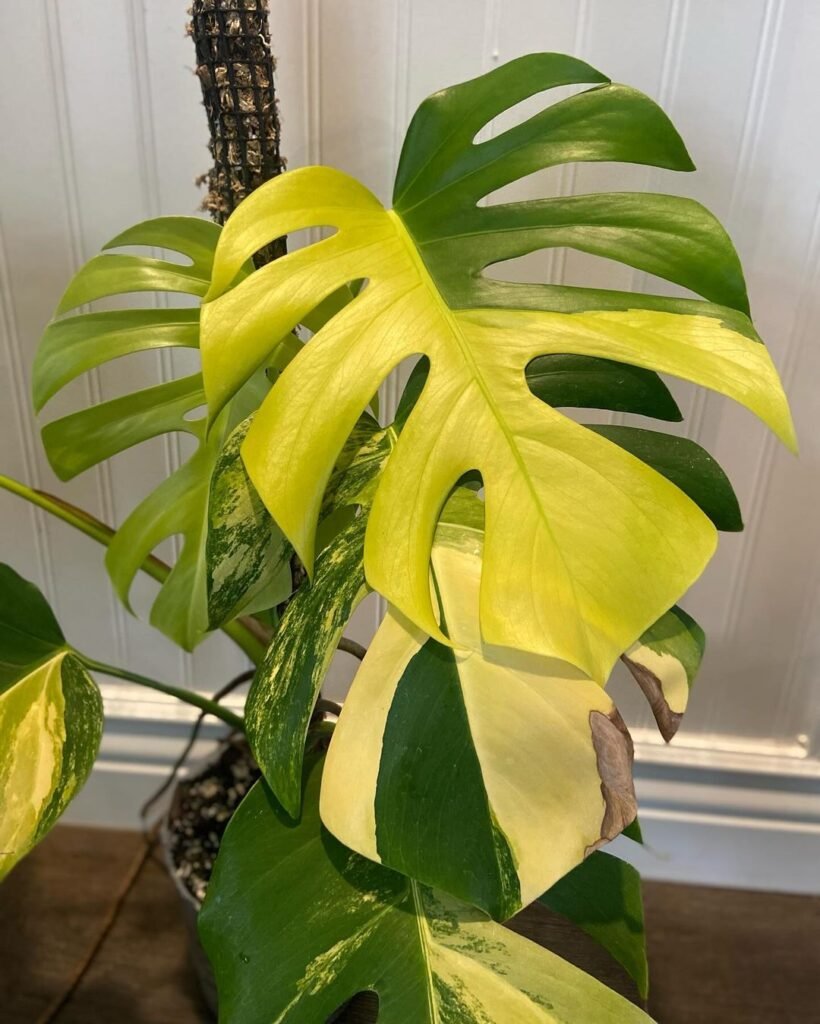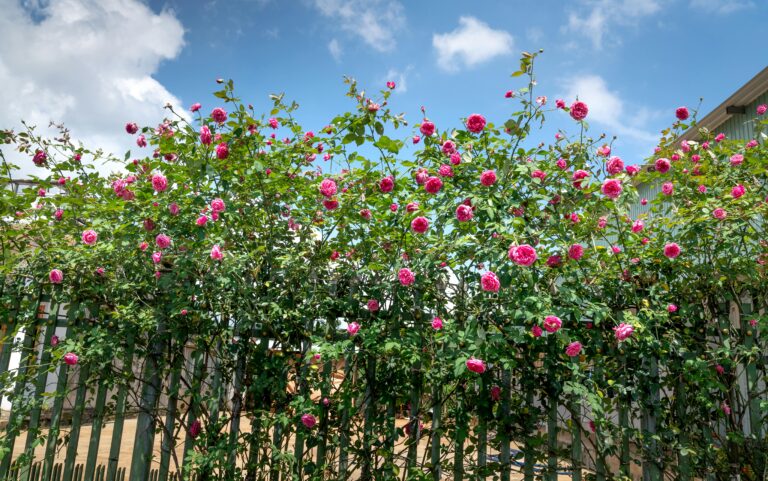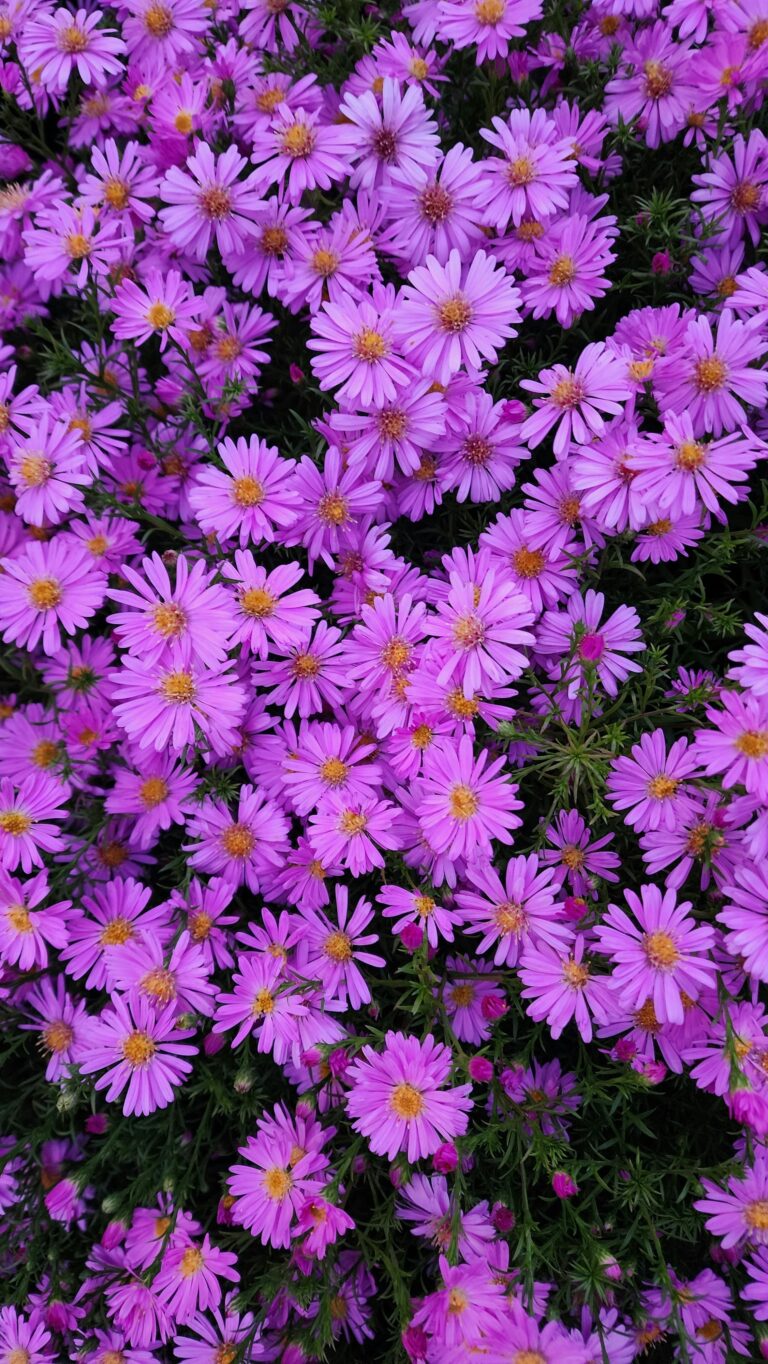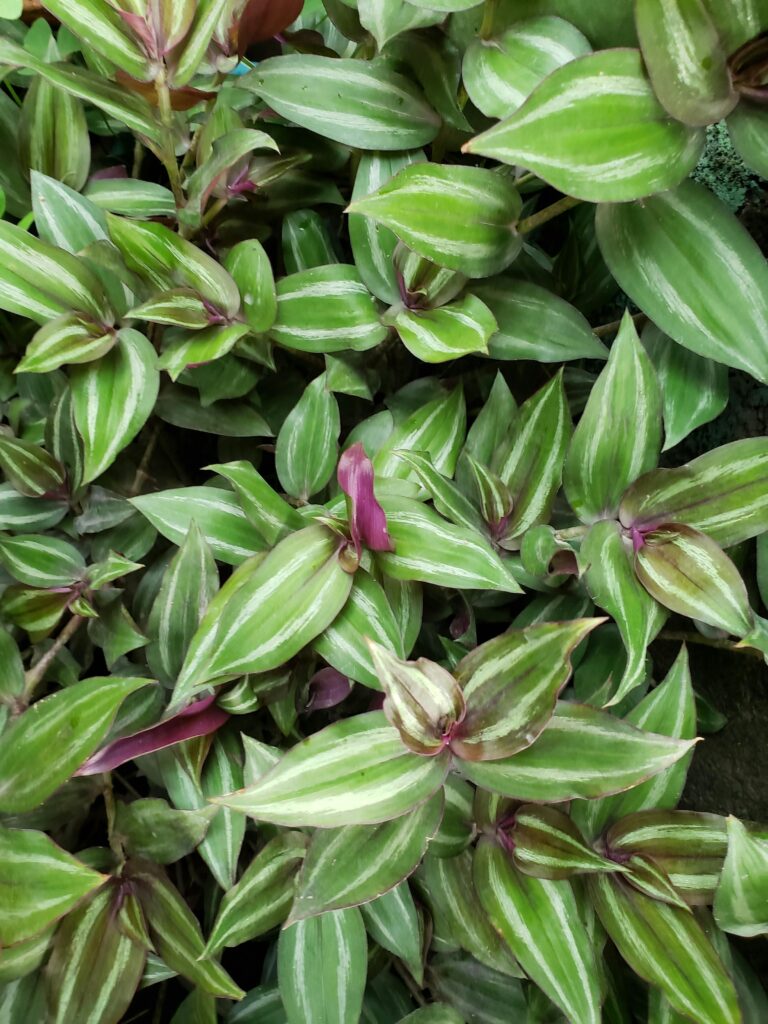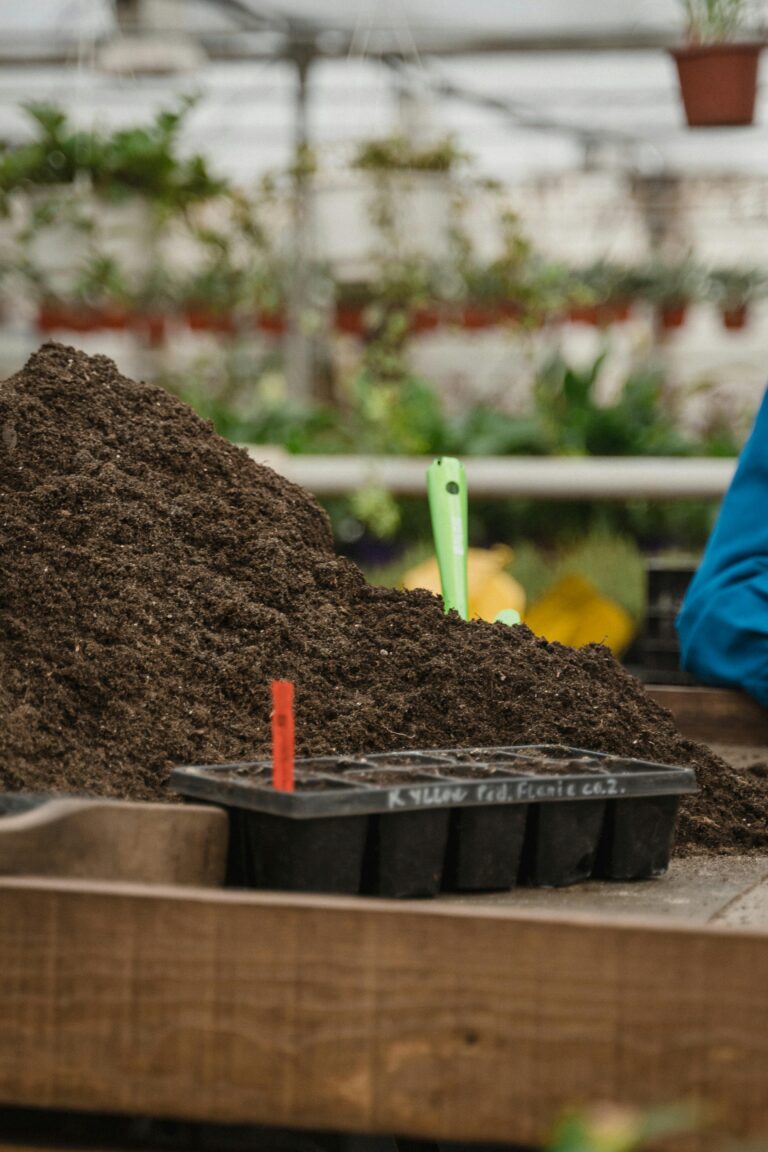Monstera plants are popular for their unique foliage and low maintenance, making them a favorite among plant enthusiasts. However, yellow leaves on a Monstera can be concerning and may indicate underlying issues that need to be addressed. When caring for Monstera plants, it’s essential to understand the potential causes of yellowing leaves and how to remedy the situation.
By identifying the root cause and taking appropriate corrective measures, you can restore your Monstera’s health and vibrancy. Let’s explore the common reasons for yellow leaves on Monstera plants and effective solutions to prevent further leaf discoloration.
Signs Of Distress In Monstera Plants
Yellow leaves on Monstera plants can signal distress, possibly due to overwatering, root rot, or lack of sunlight. Check for pests, ensure proper watering, and repot if needed to help revive your plant’s health.
Yellowing Leaves: A Warning Signal
Monstera plants are known for their large, glossy green leaves. However, if you notice your Monstera leaves turning yellow, it could be a sign that your plant is in distress. Yellowing leaves are a common issue in Monstera plants and can be caused by a variety of factors such as overwatering, underwatering, pests, and lack of nutrients. If left untreated, yellowing leaves can lead to further damage and even death of the plant.
Brown Spots: Overwatering Woes
Brown spots on Monstera leaves are another sign of distress. Overwatering is the most common cause of brown spots on Monstera leaves. When the soil is consistently wet, the roots can become waterlogged and start to rot. This can cause brown spots to appear on the leaves. To prevent overwatering, make sure to allow the soil to dry out slightly between waterings and ensure that your pot has proper drainage. In addition to yellowing leaves and brown spots, there are other signs of distress that you should be aware of when it comes to Monstera plants. These signs include:
- Wilting or drooping leaves
- Yellow or brown edges on leaves
- Stunted growth
- Leaf curling
- Yellow or brown spots on stems
If you notice any of these signs in your Monstera plant, it is important to take action to address the issue. This may involve adjusting watering habits, providing proper nutrients, addressing pest issues, or repotting the plant. By addressing signs of distress early on, you can help your Monstera plant thrive and continue to grow into a beautiful, healthy plant.
Common Causes For Yellow Leaves
Yellow leaves on Monstera may indicate overwatering, root rot, or lack of sunlight. Ensure proper drainage and adjust watering frequency to prevent further yellowing. Consider repotting, checking for pests, and adjusting light exposure to revive your plant’s health.
Excessive Watering: Root Rot Risks
Overwatering is a common culprit behind yellow leaves on Monstera plants. When the soil is consistently waterlogged, the roots suffocate and can’t absorb essential nutrients, leading to root rot. This condition deprives the plant of proper nourishment, causing the leaves to turn yellow.
Insufficient Watering: Dryness Dilemma
Conversely, inadequate watering can also trigger yellowing leaves. When the soil becomes excessively dry, the plant struggles to uptake water and essential minerals. This water stress results in the yellowing of Monstera leaves as the plant tries to conserve resources.
Environmental Stress Factors
If you notice yellow leaves on your Monstera plant, it could be due to environmental stress factors. Overwatering, root rot, lack of sunlight, or sudden temperature changes can lead to yellowing leaves. It’s important to assess the plant’s conditions and make necessary adjustments to restore its health.
Yellow leaves on your Monstera plant can be a sign of environmental stress factors. Understanding these factors and how to address them is crucial for the health of your plant.
Temperature Fluctuations: Finding The Ideal Range
Monstera plants thrive in temperatures between 65-85°F.
Avoid sudden temperature changes, as they can stress the plant.
Maintain a consistent temperature to prevent yellowing leaves.
Light Exposure: Balancing Sunlight Needs
Monstera plants need indirect sunlight to thrive.
Ensure your plant receives enough light without direct exposure.
Monitor light levels to prevent yellow leaves due to light stress.
Nutrient Deficiencies And Plant Health
Healthy plants depend on a balanced supply of essential nutrients to thrive. When a Monstera starts showing yellow leaves, it can be a sign of nutrient deficiencies or other issues impacting its overall health. Understanding the specific nutrient deficiencies and their impact on plant health is crucial for effective care and maintenance.
Nitrogen Shortage: The Chlorophyll Connection
Nitrogen is an essential component for the production of chlorophyll, the pigment responsible for the green color in plants. A shortage of nitrogen can lead to a decrease in chlorophyll production, resulting in yellowing of the leaves. This deficiency can also lead to stunted growth and overall weakened plant health.
Fertilizer Burn: Recognizing Overfeeding
Overfeeding with fertilizers can lead to a condition known as fertilizer burn, where excessive nutrients cause damage to the plant’s roots and leaves. This can manifest as yellowing or browning of the leaves, along with other symptoms such as wilting or leaf curling. Recognizing the signs of overfeeding is crucial to prevent further damage to the plant.
Proper Watering Techniques
Proper watering is crucial for the health of your Monstera plant. Yellow leaves can often be a sign of improper watering, so mastering the art of watering is essential for keeping your plant vibrant and thriving. In this section, we will explore the key techniques for watering your Monstera plant to prevent yellow leaves and promote optimal growth.
Watering Schedule: Consistency Is Key
Establishing a consistent watering schedule is essential for the well-being of your Monstera plant. Overwatering can lead to root rot and yellowing leaves, while underwatering can cause wilting and yellowing as well. Aim to water your Monstera plant every 1-2 weeks, allowing the top 2-3 inches of the soil to dry out between waterings. Consistency in your watering routine will help maintain the ideal moisture levels for your plant, reducing the risk of yellow leaves.
Soil Moisture Monitoring: Methods To Master
Monitoring the moisture level of the soil is critical for preventing yellow leaves on your Monstera plant. Utilize these methods to master soil moisture monitoring:
- Finger Test: Insert your finger into the soil up to the second knuckle. If the soil feels dry at this depth, it’s time to water your plant.
- Weight Test: Lift the pot to gauge its weight when the soil is dry and after watering. This method helps you determine when it’s time to water your Monstera based on the pot’s weight.
- Moisture Meter: Invest in a moisture meter to accurately measure the moisture content of the soil. This tool provides precise readings, guiding you on when to water your Monstera plant.
By mastering these soil moisture monitoring methods, you can ensure that your Monstera plant receives the appropriate amount of water, minimizing the risk of yellow leaves and promoting its overall health and vitality.
The Repotting Effect
The Repotting Effect:
Choosing The Right Soil Type
When repotting your Monstera, it’s crucial to select well-draining soil to prevent root rot.
Post-repotting Care: Ensuring A Smooth Transition
- After repotting, place your Monstera in indirect sunlight to aid recovery.
- Water sparingly in the weeks following repotting to avoid overwatering.
- Monitor the plant for any signs of stress and adjust care accordingly.
Pest Prevention And Treatment
Dealing with pests on your Monstera plants can be a frustrating experience, but with the right prevention and treatment methods, you can keep these pesky invaders at bay and ensure the health and vitality of your beloved plant.
Identifying Common Pests
Before you can effectively treat pests on your Monstera plant, it’s crucial to be able to identify the common culprits that may be causing the issues. Some of the most common pests that affect Monstera plants include:
- Spider mites
- Aphids
- Mealybugs
- Scale insects
Natural And Chemical Control Options
When it comes to addressing pest infestations on your Monstera, you have a range of options at your disposal, including both natural and chemical control methods.
- Regularly inspect the undersides of the leaves for any signs of pests.
- Prune and dispose of heavily infested plant parts to prevent the spread of pests.
- Introduce natural predators like ladybugs or lacewings to help control pest populations.
- Use insecticidal soap or neem oil to treat pest infestations.
- Follow the instructions carefully when using chemical treatments to avoid harming the plant.
- Consider consulting with a professional pest control service for severe infestations.
Pruning And Maintenance
To prevent yellow leaves on your Monstera, regular pruning and maintenance are essential. Trim any yellow or damaged leaves to promote healthy growth and prevent the spread of any issues. Additionally, ensure your Monstera is receiving the right amount of water, sunlight, and nutrients for optimal health.
Trimming Yellow Leaves: Timing And Technique
Yellow leaves on your Monstera can be a sign of various issues, such as overwatering, pests, lack of nutrients, or too much direct sunlight. While it’s important to address the underlying cause of the yellowing leaves, you may also need to trim them off to keep your plant looking healthy and neat. When it comes to trimming yellow leaves, timing is key. You don’t want to cut off leaves that are still green and healthy, as they are essential for your plant’s growth and photosynthesis. Instead, wait until the yellow leaves have turned mostly brown and crispy before snipping them off. To trim yellow leaves, use a clean, sharp pair of scissors or pruning shears. Make a clean cut as close to the base of the leaf stem as possible, without damaging the stem or any nearby leaves. Avoid tearing or ripping the leaf, as this can create an entry point for pests or diseases.
Ongoing Care For A Healthy Monstera
In addition to trimming yellow leaves, there are several ongoing maintenance tasks you can do to keep your Monstera healthy and thriving. Here are some tips:
- Watering: Water your Monstera thoroughly when the top inch of soil feels dry to the touch. Avoid overwatering, as this can lead to root rot and other issues.
- Fertilizing: Feed your Monstera with a balanced fertilizer every 4-6 weeks during the growing season (spring and summer), and reduce or stop fertilizing in the winter.
- Lighting: Monstera prefers bright, indirect light, but can tolerate some direct sunlight in the morning or evening. If the leaves start to turn yellow or brown, it may be a sign of too much or too little light.
- Pest control: Check your Monstera regularly for signs of pests, such as spider mites or mealybugs, and treat them promptly with insecticidal soap or neem oil.
- Repotting: Repot your Monstera every 1-2 years, or when the roots start to outgrow the pot. Use a well-draining potting mix and a pot with drainage holes.
- Pruning: Aside from trimming yellow leaves, you can also prune your Monstera to promote bushier growth and remove any damaged or leggy stems. Cut just above a node or leaf to encourage new growth.
By following these tips and addressing any issues promptly, you can help your Monstera stay healthy and vibrant, with fewer yellow leaves to worry about.
Frequently Asked Questions
How Do You Fix Yellow Leaves On Monstera?
To fix yellow leaves on Monstera, check for pests, repot if root-bound, adjust watering, and ensure proper sunlight.
Should I Cut Yellow Leaves Off My Monstera?
Trim yellow Monstera leaves only if they are mostly yellow or detract from the plant’s appearance.
What Does An Overwatered Monstera Look Like?
An overwatered Monstera plant will have brown spots on its leaves, which indicate that the plant is suffering from overwatering. These brown spots will stunt the growth of the plant and can be a sign of root rot. It is important to adjust the watering frequency and allow the soil to dry out between waterings to prevent overwatering.
Can Monstera Leaves Turn Yellow From Underwatering?
Underwatering can cause Monstera leaves to turn yellow due to lack of moisture. Ensure proper watering to maintain leaf health.
Conclusion
Understanding the reasons behind yellow Monstera leaves is crucial for plant health. Addressing issues like pests, overwatering, or nutrient deficiencies can help revive your plant. Regular monitoring and proper care will ensure vibrant, healthy foliage for your Monstera.

